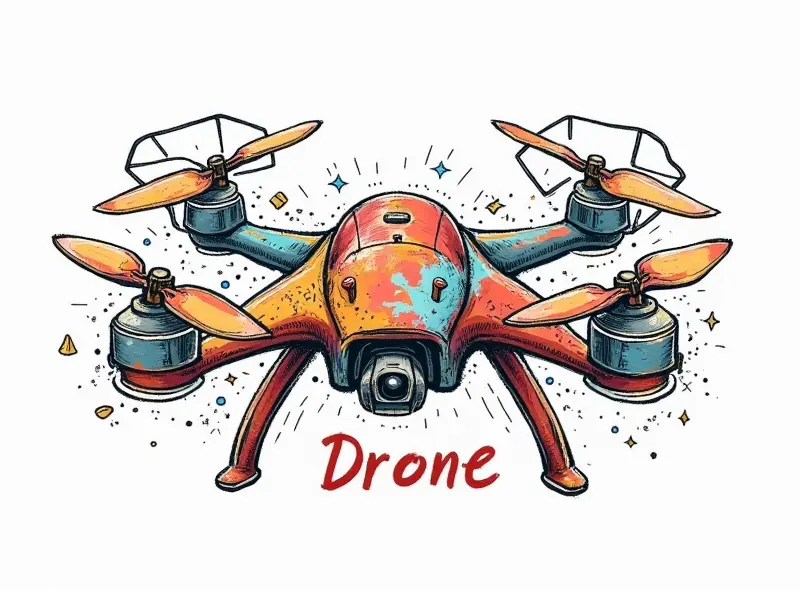Can drones fly in cold weather?

Drones in Winter: Cold Weather Flying Tips
The winter season brings unique challenges for drone enthusiasts, particularly when it comes to flying drones in cold weather. As temperatures drop and the air becomes crisp, many wonder if their drones can still perform optimally or even function at all. This article delves into the intricacies of operating drones in chilly conditions, offering valuable insights and practical advice.
Battling the Chill: Drone Flight in Cold Weather
Flying a drone in cold weather requires careful consideration of several factors to ensure safe and effective operation. The first step is understanding how low temperatures affect various components of your drone:
- Propellers: In freezing conditions, propellers can become brittle and more prone to cracking or breaking.
- Batteries: Cold weather significantly reduces the efficiency and capacity of lithium-ion batteries, leading to shorter flight times.
- Motors: Motors may struggle to maintain optimal performance due to increased resistance in cold temperatures.
Frozen Skies: Can Drones Soar in Subzero Temps?
The question of whether drones can fly in subzero temperatures is a common concern among pilots. While many drones are designed with some level of cold weather resilience, extreme cold poses significant challenges:
- Thermal Expansion and Contraction: Extreme temperature fluctuations can cause materials to expand or contract, potentially leading to mechanical issues.
- Battery Capacity: At temperatures below freezing, battery discharge rates increase dramatically, reducing overall flight duration.
Arctic Adventures: Drone Performance in Frosty Climes
Flying drones in frosty climes demands a robust approach to ensure optimal performance. Here are some key considerations:
- Pre-Flight Checks: Conduct thorough pre-flight checks focusing on battery health, propeller integrity, and motor functionality.
- Insulation: Use insulated cases or wraps for batteries to keep them warm during transport and storage.
Ice, Snow & Drones: Navigating the Chill Factor
The presence of ice and snow can further complicate drone operations. Here’s how to navigate these challenges:
- Cleaning Ice and Snow: Regularly clean propellers and motors of accumulated ice or snow to prevent performance issues.
- Avoid Water Accumulation: Be cautious about flying over water, as cold temperatures can cause condensation that damages electronics.
Winter Woes: How Cold Weather Affects Drones
Cold weather introduces several woes for drone operators. Understanding these issues is crucial to maintaining safe and effective flights:
- Battery Life Reduction: Lithium-ion batteries lose capacity rapidly in cold conditions, reducing flight time.
- Increased Risk of Malfunctions: Extreme cold can cause components like motors and propellers to malfunction or fail.
Extreme Cold: A Drone's Worst Enemy?
In extreme cold, drones face their most significant challenges. Here’s what you need to know:
- Battery Management: Use battery warmers and keep batteries in a heated environment before use.
- Material Degradation: Cold weather can cause materials like plastic and metal to become brittle, increasing the risk of breakage.
Flying High in the Cold: Drone Performance
To ensure optimal performance when flying drones in cold weather, follow these tips:
- Monitor Temperature Readings: Use temperature sensors to monitor critical components and adjust settings accordingly.
- Limit Flight Duration: Shorten flight times to prevent battery drain and reduce the risk of mechanical failure.
Tips for Flying FPV Racing Drones in Snow
Flying FPV racing drones in snow requires specialized knowledge and equipment. Here are some tips:
- Protect Electronics: Use waterproof cases to protect cameras, transmitters, and other sensitive electronics.
- Avoid Moisture Accumulation: Keep moisture out of the drone’s interior by using desiccants or silica gel packets.
Surviving Frosty Skies: Drone Flight Advice
To survive frosty skies and ensure successful flights, consider these practical tips:
- Warm Up Batteries: Pre-warm batteries in a heated environment before use to maximize flight time.
- Check Propellers Regularly: Inspect propellers for cracks or damage before each flight, especially after exposure to cold conditions.
Can Drones Function in Frosty Climates?
The ability of drones to function in frosty climates depends largely on the specific model and its design features. While many modern drones are equipped with some level of cold weather resilience, extreme conditions often require additional precautions:
- Choose Cold-Resistant Models: Opt for drones designed specifically for use in low temperatures.
- Use Heated Cases: Store and transport batteries in heated cases to maintain optimal performance.
Conclusion
Flying drones in cold weather presents unique challenges, but with the right preparation and precautions, you can ensure safe and effective operations. By understanding how low temperatures affect your drone’s components and implementing practical tips for pre-flight checks and maintenance, you can enjoy winter flights without compromising performance or safety.

